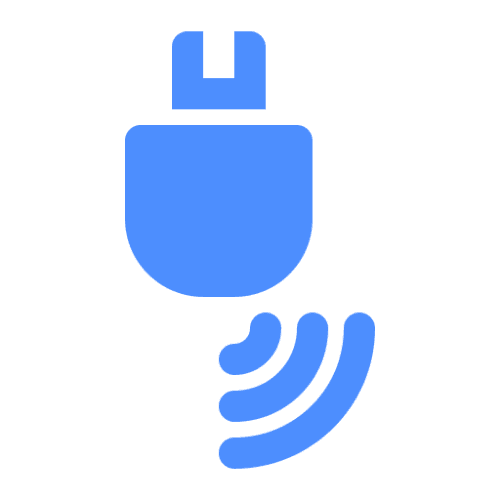Compare internet plans
Compare other products
We currently don't have that product, but here are others to consider:
How we picked theseOver 450,000 Aussies compared internet plans with us in the past year
As seen on...


How to compare internet plans: a step-by-step guide
Here's a rapid-fire list of five questions to ask yourself before you start comparing internet plans.
If anything feels a bit fuzzy, don't worry - we'll unpack it all just after.
What type of internet plan are you after? In Australia, you'll generally have access to one or more of these: NBN (including fixed-line, fixed wireless or satellite), home wireless broadband or mobile broadband. What's available depends on where you live.
What's your budget? Our research shows the average broadband bill in Australia is $78 a month, but your cost will depend on the speed you need and which provider you go with. Finder compares 40+ providers, so there's plenty of choice when it comes to price.
What internet speeds do you want? It comes down to how many people are in your home and what you're using the internet for. More users and heavier activities (streaming in 4K, uploading or downloading large files regularly or gaming) usually mean you'll want faster speeds.
How much data do you need? Most internet plans these days come with unlimited data, providing peace of mind. But with mobile broadband or NBN satellite, data caps are more common, so it's important to check that the allowance suits your internet use. Take a look at our guide to get a better idea of how much data you might need.
Contracts or no contracts? Most providers these days offer no lock-in contracts. Just make sure to read the terms and conditions before signing up.
What type of internet plans are available?
When it comes to picking an internet plan in Australia, you'll usually be looking at one of three main types.
NBN
The NBN (National Broadband Network) is what most of us use to get online in Australia.
It's a government-owned network, built and maintained by NBN Co, with plans sold through a range of internet providers.
Since the NBN uses a mix of technologies like fixed-line (available to around 90% of Aussies), fixed wireless, and satellite, your connection type will depend on where you live.
That's why your address plays such a big role when signing up for an NBN plan.
- Widespread coverage
- Flexible speed tiers, with options up to 1Gbps
- Plenty of plans to choose from based on your budget
- Performance can vary depending on the NBN technology at your address

Home wireless broadband
Home wireless broadband has quickly become a popular alternative for those who aren't happy with their NBN connection or can't get access to it.
It runs on the same 4G or 5G mobile networks as your phone, but instead of using a portable device, your provider sends you a modem designed specifically for home use. Just plug it in and you're good to go.
5G home wireless broadband - or 5G home internet for short - can offer speeds similar to some NBN connections.
The main caveat is that fewer providers offer home wireless broadband plans, and availability will depend on your address.
- Easy setup - no installation required
- Good alternative to the NBN for speed and price
- Reliability can be an issue depending on signal strength and network congestion

Mobile broadband
Mobile broadband works similarly to your mobile phone plan, just without the calls and texts.
You can use a data-only SIM in a tablet or phone, or insert it into a Wi-Fi dongle that plugs into a USB port.
Alternatively, you can use a portable Wi-Fi modem (also known as pocket Wi-Fi), which can be handy if you want to create a hotspot for multiple devices.
- Internet on the go. Can be used anywhere you get phone signal.
- Great backup option if your home internet goes down.
- Your connection might drop out in bad weather or areas with patchy signal.

How much can you save by comparing broadband plans?
We calculated potential savings by comparing the prices of the cheapest and most expensive broadband plans in our database (as of 2 December 2025) over a 12-month period.
What internet speed do I need?
People often zone out when it comes to internet speeds because really, who cares about megabits per second (Mbps)? Most of us just want to know if it's good enough for our internet needs.
We get it. So here's a simple breakdown of how to choose between NBN and home wireless broadband speeds.
NBN speeds
Selecting the right NBN speed tier comes down to how many people are in your household and what you want to do.
1 person or light users
- Stream shows in high definition or even 4K
- Browse the web and scroll social media
- Take video calls
- Download small files or apps
2-3 people or moderate users
- Stream high definition content on multiple devices at once
- Join video calls while others game or stream
- Download large files faster
- Good option if you have multiple smart devices (lights, speakers)
3-5 people or moderate users
- Stream HD and 4K video on multiple screens
- Play online games smoothly
- Upload medium-sized work files or videos quickly
- Work from home while others stream or game
4–6 people or heavy users
- Stream 4K or even 8K content across multiple screens
- Online gaming with smooth performance
- Upload videos or large work files in minutes
- Keep lots of smart home devices running without slowing the network
7+ people or very heavy users
- Stream 4K or 8K content on multiple screens
- Support multiple simultaneous video calls and gaming sessions
- Upload large work files or media projects within seconds
- Connect multiple smart home devices without slowing down
Don't forget, your NBN connection will determine what speeds you can get.
Only those on a Fibre to the Premises (FTTP) or Hybrid Fibre Coaxial (HFC) NBN connection, will be able to get speeds faster than NBN 100.
Read our detailed guide on NBN speed tiers.
Home wireless broadband speeds
Your speeds on a 4G home wireless broadband plan will normally cap out at 25Mbps.
For 5G home internet, providers tend to lean towards plans with either a maximum of 50Mbps or 100Mbps speeds.
Some providers, like Telstra, SpinTel and Optus offer faster or even uncapped speeds.
Winners of the 2025 Finder Broadband Awards
Awards are a great way to narrow down the best of the best. See which providers topped this year's broadband awards.
Finder Score explained
- 9+ Excellent - These plans offer outstanding value with fast speeds, generous data, and great features, making them among the best on the market.
- 7+ Great - These plans are strong performers, though they may have slightly higher prices or less competitive features.
- 5+ Satisfactory - These plans are serviceable but may come with slower speeds, limited data, or fewer features.
- Less than 5 – Basic - These are less competitive plans, often offering lower value in terms of speed, data, and included features.
Digging deeper into the Finder Score for broadband
We analyse over 250 internet plans from 40+ providers and compare them side by side to produce a straightforward score out of 10. Products are assessed for their costs over a two year period, download speeds, data limits and modem costs. We also assess providers for customer support features offered, while also assigning each provider a customer satisfaction score generated from our annual survey.
Products must be active residential NBN, 5G or 4G plans to be eligible for a score. NBN plans are grouped into speed tiers and scored within their applicable tier. The speed tiers NBN products are grouped into are nbn12, nbn25, nbn50, nbn75, nbn100, nbn250, nbn500 and nbn1000.
Frequently asked questions
Sources
Ask a question
114 Responses
Read more on Internet Plans
-
Compare 5G home internet plans
Get lightning-fast speeds on a 5G home internet plan.
-
Best internet providers in Australia
See the 10 best and most popular picks among Finder users this month!
-
Internet speed test
Find out if you're getting the speeds you're paying for with the Finder internet speed test.
-
Dodo NBN review
Dodo offers its customers affordable access to the Internet on a wide range of connection types, including the NBN and mobile internet.
-
Best internet plans and deals
Check out our top 7 picks across NBN and home wireless broadband.
-
Superloop NBN review
Superloop has its own fibre network in Australia and offers plans at fast speeds.
-
Aussie Broadband review
Aussie Broadband is known for its stellar customer service and fast NBN speeds.
-
Exetel NBN review
Exetel offers a single plan with extra perks and reliable performance, according to the ACCC.
-
iPrimus review
With 20 years of experience in the Australian market, iPrimus offers customers a compelling, quality broadband service.
-
iiNet internet review
Find out if it's worth signing up to iiNet for your broadband connection.




















We don’t have NBN available to us. What networks would be available to us.
Hi Rose, a close alternative is 5G home internet – you can compare NBN alternatives in our guide: https://www.finder.com.au/broadband-plans/nbn/nbn-alternatives. Hope this helps!
We go overseas each year but still pay for our non broadband when away. Do non contract ( month to month ) plans allow a stop and start service or is more complicated than thst
Hi Babs,
You may be able to pause your internet service, but it depends on your provider and plan. Some providers offer a temporary hold on your account for extended travel, or you may be able to downgrade your plan to a cheaper/lower plan while you’re away. It’s best to contact the provider directly to inquire about your options.
How do you end a contact with Optus?
Hi Caroline, you can just give them a call and they’ll help you out! Hope this helps.
Hi Danish, We’re a review and comparison site, we don’t have customer service staff, we simply connect you with options for your household suppliers. Your best bet is to contact a retailer directly.
Best of luck!
I want home internet, currently have a telstra mobile plan $49 per month want a plan now that combines home internet & mobile so I can use my laptop at home. Single pensioner, don’t want WiFi, don’t trust. Need a modem/router supplied also.
Hi Pauly, if you’re trying to avoid Wi-Fi your bundling options are limited and you might be better off getting a home internet plan separately. Your options include a home wireless internet plan. By plugging in an ethernet cable directly to your laptop you can avoid using Wi-Fi. Alternatively, you could consider getting a mobile broadband plan and plugging in a dongle directly into your laptop. You can see the following guides to check out plans and more detailed information. Hope they help!
https://www.finder.com.au/broadband-plans/mobile-broadband
https://www.finder.com.au/broadband-plans/home-wireless-broadband